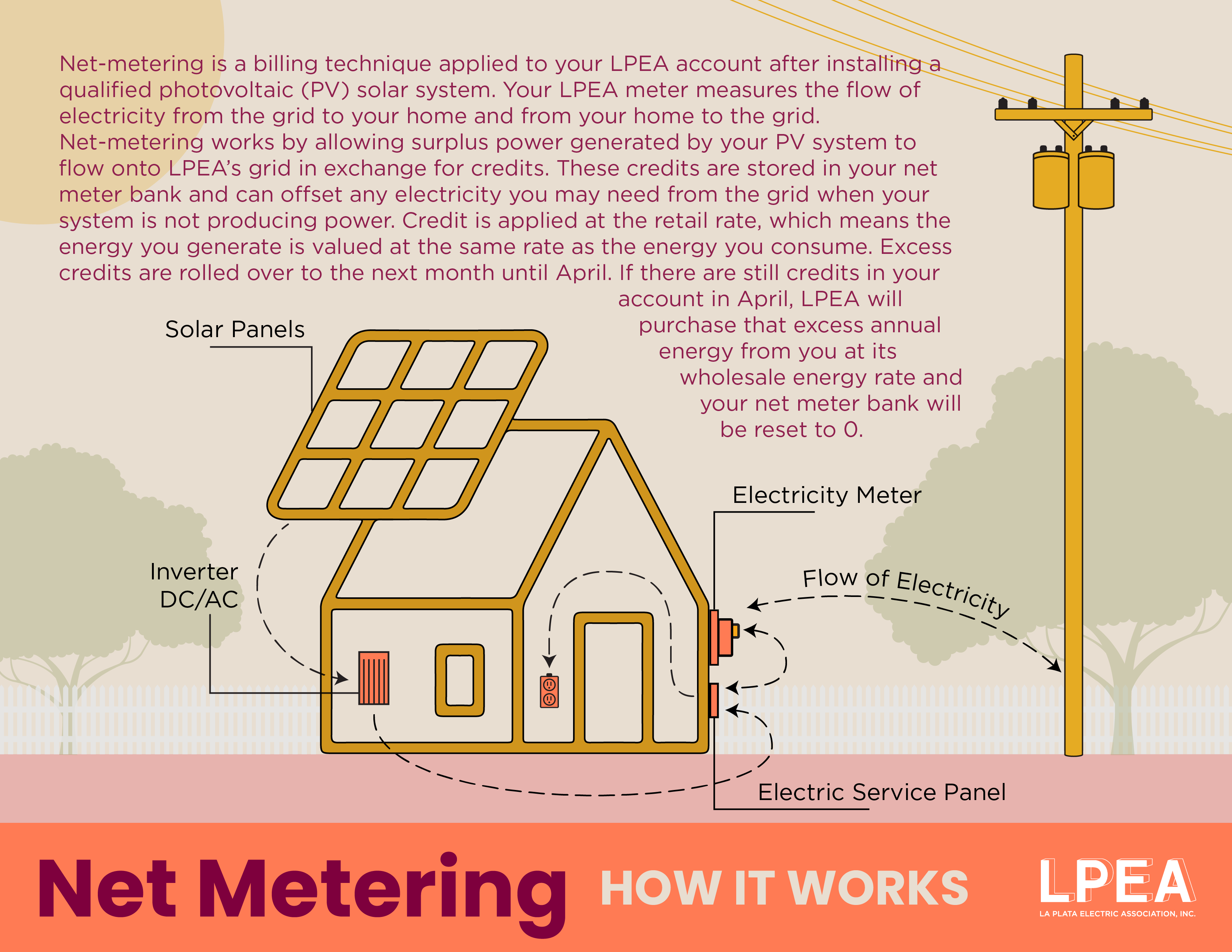
KEY FACTORS OF NET-METERING
• BILLING – Please visit LPEA's Rates Page for the latest residential and commercial rates. Solar can reduce or eliminate the energy charge on a bill through net metering, if sized correctly. There will still be a base charge, peak power charges, and taxes and fees levied by LPEA. You will continue to receive a monthly LPEA bill. The energy we deliver to you is worth the same amount as the energy you deliver to us.
• SYSTEM SIZING – For the best return on your investment, LPEA will look at your previous 12 months of energy consumption in order to appropriately size your system. The ideal size should offset 100% of your annual usage. Find your usage in your SmartHub account or sign a Billing Release Form to allow your installer to obtain the usage history. For new construction, allowed system sizing is based on your proposed heating/cooling technology combined with the home's square footage.
• QUALIFIED INSTALLERS – Local installers are always preferred because they are familiar with the region and LPEA's standards and protocols. See our list of LPEA-qualified installers and be weary of solar scams in the area.
• LOANS – LPEA partners with First Southwest Bank, which offers low-interest rate loans for electrical projects, including solar installation. Fill out an application through our On-Bill Financing Program (under Accounts & Billing). Your solar array size may not exceed 150% of your previous year’s consumption for this program.
• INCENTIVES – There are currently no rebates for solar programs. However, LPEA offers a multitude of rebates that can work in conjunction with reducing energy consumption, such as weatherization, energy efficiency audits, heat pump systems, and more. Find the complete list of rebates here.
SOLAR PRODUCTION KNOWLEDGE
• Using appliances and charging devices is most beneficial while the sun actively hits the panels.
• Energy made by solar panels is first used at the residence, with additional energy being delivered back onto the grid.
• Battery upgrades allow you to store the excess energy in your batteries, which can later be used to power your home when there is no solar power or in the event of a power outage.
• If your PV system produces more energy than you use in a month, the excess kilowatt-hours (kWh) are credited to your net-meter bank.
